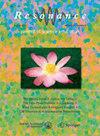Learning from an Expert Teacher: Feynman’s Teaching of Gravitation as an Examplar
IF 0.4
Q4 EDUCATION, SCIENTIFIC DISCIPLINES
引用次数: 0
Abstract
An expert teachers’ instruction can be helpful to other teachers because good teaching effectively guides students to develop meaningful learning. Feynman is an excellent physics lecturer as well as one of the greatest physicists of the 20th century who presented and explained physics with his unique teaching style based on his great store of knowledge. However, it is not easy to capture and visualize teaching because it is not only the complex phenomena interrelated to various factors with the content to be taught but also the tacit representation. In this study, the framework of knowledge & belief based on the integrated mental model theory was used as a tool to capture and visualize complex and tacit representation of Feynman’s teaching of ‘The theory of gravitation,’ a chapter in The Feynman Lectures on Physics. Feynman’s teaching was found to go beyond the transmission of physics concepts by showing that components of the framework of knowledge & belief were effectively intertwined and integrated in his teaching and the storyline was well-organized. On the basis of these discussions, the implications of Feynman’s teaching analyzed within the framework of knowledge & belief for physics teacher education are derived. Finally, the characteristics of the framework of knowledge & belief as tools for the analysis of teaching are presented.向专家老师学习:以费曼的万有引力教学为例
一个专家教师的指导可以帮助其他教师,因为好的教学有效地引导学生发展有意义的学习。费曼是一位杰出的物理学讲师,也是20世纪最伟大的物理学家之一,他以自己丰富的知识为基础,以独特的教学方式展示和解释物理学。然而,教学不容易被捕捉和可视化,因为它既是与教学内容相关的各种因素的复杂现象,也是隐性的表征。在本研究中,基于综合心理模型理论的知识和信念框架被用作捕获和可视化费曼在《费曼物理学讲座》中的一章“引力理论”教学的复杂和隐性表征的工具。人们发现,费曼的教学超越了物理概念的传递,他的教学表明,知识和信念框架的组成部分在他的教学中有效地交织和整合在一起,故事情节组织得很好。在此基础上,推导出在知识与信念的框架下分析费曼教学对物理教师教育的启示。最后,提出了知识信念框架作为教学分析工具的特点。
本文章由计算机程序翻译,如有差异,请以英文原文为准。
求助全文
约1分钟内获得全文
求助全文
来源期刊

Resonance-Journal of Science Education
EDUCATION, SCIENTIFIC DISCIPLINES-
CiteScore
0.90
自引率
0.00%
发文量
30
期刊介绍:
Resonance is a journal of science education, published monthly by the Indian Academy of Sciences, Bangalore, entering its second decade of publication. The journal is primarily directed at students and teachers at the undergraduate level, though some of the articles may go beyond this range. Resonance has a council of editors drawn from institutions all over in India, with a Chief Editor and several Associate Editors located in Bangalore. Each issue of Resonance contains articles on physics, chemistry, biology, mathematics, computer science and engineering. The format is attractive and easy to read, with photographs, illustrations, margin notes, boxes and space for comments provided. The articles are of various categories: individual general articles, series made up of several parts, concise article-in-boxes, classroom pieces, nature-watch pieces, research news, book reviews, and information and announcements useful to students and teachers. Each issue of Resonance also highlights the contributions of a chosen scientist, engineer or mathematician, with a portrait on the back cover and articles describing his or her life and work. In some cases, an article written by the scientist on a general theme is included as a Classic or a Reflections item. Some of the personalities featured so far are -- Einstein, Schroedinger, Pauli, Chandrasekhar, Raman, S N Bose, von Neumann, Turing, Darwin, McClintock, Haldane, Fisher, Lorenz, Mendel, Dobhzansky, Pauling, the Bernoullis, Fermat, Harish-Chandra, Ramanujan and Weil. Resonance invites original contributions in various branches of science and engineering and emphasizes a lucid style that will attract readers from diverse backgrounds. A helpful general rule is that at least the first one third of the article should be readily understood by a general audience. Articles may be submitted to any of the editors or directly to the editorial office. All submissions are refereed. Students and teachers are particularly encouraged to sub mit articles. Comments and suggestions about articles are also welcome.
 求助内容:
求助内容: 应助结果提醒方式:
应助结果提醒方式:


